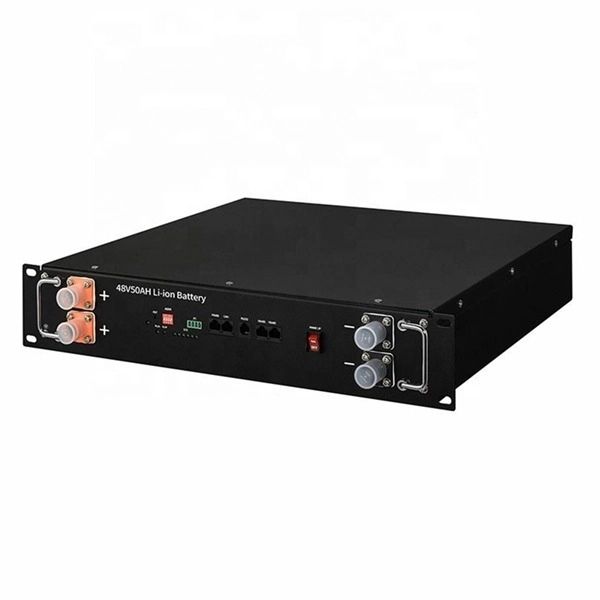Calculadora de tempo de execução de bateria de chumbo-ácido, lítio e LiFePO4
Esta fórmula estima o tempo de execução de baterias de chumbo-ácido, lítio e LiFePO4 sob uma potência de carga específica. Ao inserir a capacidade da bateria (Ah), tensão (V) e potência de carga (W), a calculadora determina a autonomia da bateria (horas) com base na eficiência do tipo de bateria selecionado.
Calculadora de tempo de execução da bateria
Get Bulk Discounts on Lithium Batteries. Click here to Calculate Your Wholesale Price!
Battery Run Time Calculator: Importance of Choosing Differences Between Battery Types
Baterias de chumbo-ácido
Lead acid batteries, a time-tested technology, have been in use since their invention in 1859 by French physicist Gaston Planté. Their reliability and relatively low cost make them a secure and financially savvy choice for many applications. Lead acid batteries are commonly found in:- Automóveis: A maioria das baterias de automóveis são de chumbo-ácido, fornecendo a energia necessária para dar partida no motor e operar os componentes eletrônicos do veículo.
- Sistemas de energia de reserva: Eles são frequentemente usados em fontes de alimentação ininterruptas (UPS) para energia de reserva de emergência.
- Armazenamento de energia renovável: As baterias de chumbo-ácido armazenam energia em sistemas de energia solar e eólica.
Baterias de lítio
Lithium batteries, a more modern and high-performance technology, are known for their high energy density, lightweight, and long lifespan. These characteristics instill confidence and reassurance in their performance and longevity. Advantages of lithium batteries over lead acid batteries include:- Maior densidade de energia: As baterias de lítio armazenam mais energia em um pacote menor e mais leve.
- Vida útil mais longa: normalmente duram mais, com mais ciclos de carga e descarga.
- Carregamento mais rápido: Lithium batteries can be faster than lead acid batteries.
- Menos manutenção: Requerem menos manutenção e não têm efeito memória.
Baterias LiFePO4
LiFePO4 batteries, also known as lithium iron phosphate batteries, are an advanced type of lithium battery. Their safety and durability make them a secure and confident choice for high-demand and critical applications. Benefits of LiFePO4 batteries include:- Segurança: They are more stable and less prone to thermal runaway or catching fire than other lithium-ion batteries.
- Longa vida útil: As baterias LiFePO4 podem suportar milhares de ciclos de carga e descarga, tornando-as muito duráveis.
- Ampla faixa de temperatura: They perform well across various temperatures.
- Altas taxas de descarga: Essas baterias podem fornecer alta potência para aplicações exigentes.
- Veículos elétricos: Fornecendo uma fonte de energia mais segura e duradoura.
- Sistemas de armazenamento de energia: These are used in home and industrial renewable energy storage.
- Baterias marítimas e para trailers: Offering reliable recreational vehicle and boat power.
Calculadora do tempo de execução da bateria: o papel da capacidade, tensão, eficiência e potência de carga
Capacidade de carga
Capacidade de carga measures the amount of energy a battery can store. It is usually expressed in ampere-hours (Ah), which indicates how much current a battery can supply over a specific period. For example, a battery with a capacity of 10 Ah can deliver 10 amperes for one hour or 1 ampere for 10 hours. Knowing the battery capacity is crucial because it helps determine how long the battery will last under a given load. Standardized tests are conducted to measure battery capacity, such as the 20-hour rate test. This test involves discharging the battery at a constant current until it reaches a specific cutoff voltage. For instance, a 100 Ah battery would be discharged at 5 amps (100 Ah / 20 hours = 5 amps). The capacity is then calculated based on the discharge current and time.Voltagem da bateria
Battery voltage is the electrical potential difference between a battery’s positive and negative terminals. It is measured in volts (V). A battery’s voltage affects its ability to deliver power to a load. Higher-voltage batteries can provide more power, making them suitable for high-power applications. Typical battery voltage levels vary based on their type and application. For example, lead-acid batteries often come in 12V configurations, while lithium-ion batteries can be found in various voltages, such as 12V, 24V, 36V, and 48V. The voltage also influences the battery’s efficiency and performance, impacting the overall runtime.Eficiência da bateria
Battery efficiency refers to the percentage of energy stored in the battery that can be retrieved during discharge. Different types of batteries have varying efficiency levels. For example, lead-acid batteries typically have an efficiency of around 80%, meaning 80% of the energy put into the battery is retrievable. In contrast, lithium-ion batteries have higher efficiency, often around 90%, and LiFePO4 batteries can reach up to 95%. Efficiency is critical in determining how effectively a battery can power a load. High-efficiency batteries waste less energy, providing more usable power and extending the battery’s runtime.Carregar energia
Load power is the amount consumed by the device or system connected to the battery. It is measured in watts (W). Load power directly affects the battery’s discharge rate and, consequently, its runtime. A higher load power will deplete the battery faster, while a lower load power will allow the battery to last longer. For example, if a device consumes 50 watts and is connected to a 12V battery, it will draw approximately 4.17 amperes (50W / 12V = 4.17A). The battery’s capacity and efficiency determine how long it can sustain this load before recharging.Por que esses fatores são importantes na calculadora
The Lead Acid, Lithium & LiFePO4 Battery Run Time Calculator uses these four factors—Capacidade de carga, voltage, efficiency, and load power—to estimate how long a battery will last under a specific load. Here’s why each factor is essential:- Capacidade de carga: Determina a energia total disponível para a carga.
- Voltagem da bateria: afeta o fornecimento de energia e a compatibilidade com a carga.
- Eficiência da bateria: Influencia a quantidade de energia utilizável e o desempenho geral.
- Carregar energia: Dictates the battery’s discharge rate.
Related Products
Learn More About Battery
No posts found



































